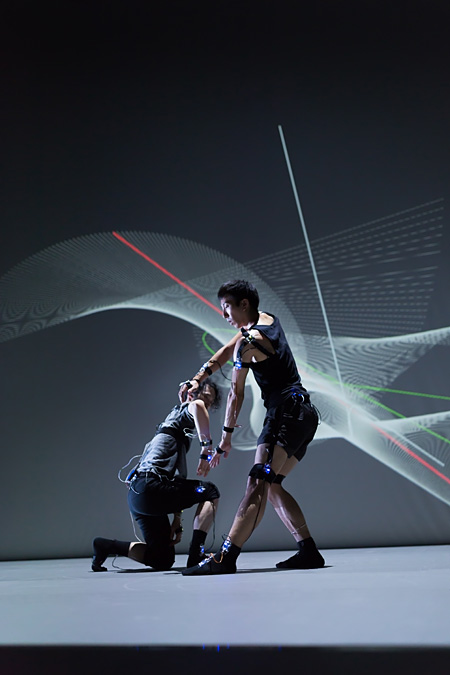
YCAM InterLab + Yoko Ando
Dividual Plays
While the antonym of “individual” is “collective” in general, Gilles Deleuze (1925-95), a French philosopher, came up with the notion of “dividual” since the preposition “in” disaffirms the following word. Notions of “individual” and “dividual” have been, and continue to be, discussed in various contexts such as the economy, civil society, personal identity and more.
Through her time at The Forsythe Company, Yoko Ando came to define improvisation as “being individual but with the possibility of being collective at the same time”. While each agent performs independently, he/she is synchronized with other dancers simultaneously. RAM project began by finding shapes for the ideas in Yoko’s dancer’s mind. The piece expands on the idea of “dividual” and explores new dance, new notions of the body and the new relationships between the human body and technology by pursuing deeper interaction between dancers and the notion of system.

